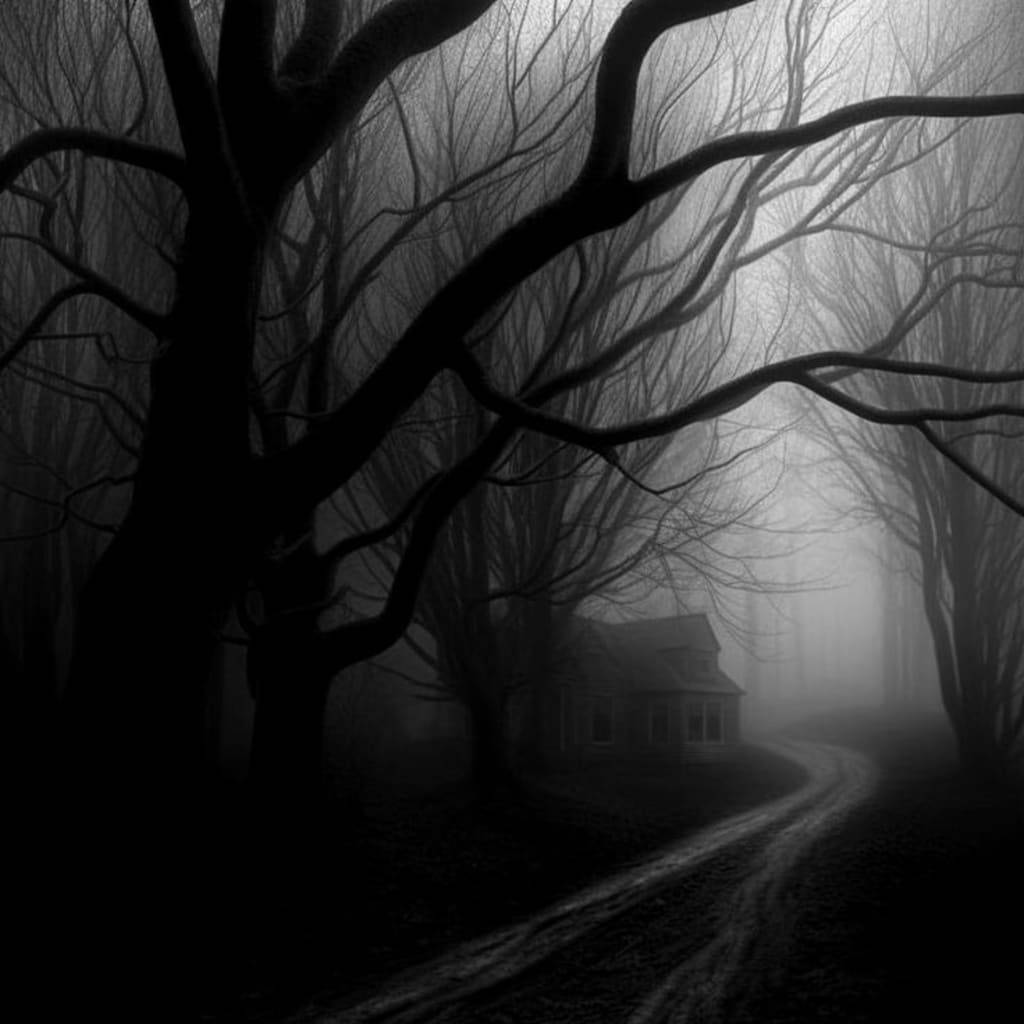Picture this: it’s a warm June evening in 1969, and a six-year-old boy named Dennis Martin is giggling, darting through the tall grass of a meadow in the Great Smoky Mountains, playing a game of hide-and-seek with his family. The sun is dipping low, casting golden rays over Spence Field, a sprawling 200-acre meadow perched nearly 5,000 feet above sea level. His bright red shirt flashes as he ducks behind a bush, planning to jump out and scare the adults. But then… he’s gone. Just like that. No sound, no trace, no clue. Dennis vanishes, sparking one of the largest search operations in National Park Service history. And here’s the kicker: his disappearance is just the tip of the iceberg in a region that seems to hum with mystery. Welcome to Appalachia, where the mountains don’t just hold secrets-they weave them into the very air you breathe.
I’ve always been drawn to places like this, you know? There’s something about the Appalachian Mountains that feels… different. Maybe it’s the way the fog clings to the peaks like a ghostly shawl, or how the wind carries whispers of stories older than the hills themselves. I grew up hearing tales of strange happenings-lights in the sky, creatures in the woods, people vanishing without a trace. And the more I dug into the story of Dennis Martin and the eerie folklore of Appalachia, the more I felt that shiver down my spine, that mix of curiosity and unease that makes you want to lean closer to the campfire, even when you’re a little scared of what you might hear next.
Let’s start with Dennis. It was Father’s Day weekend, and the Martin family-three generations strong-had hiked up to Spence Field for a camping trip. Dennis, just five days shy of his seventh birthday, was with his dad, William, his older brother, Douglas, and his grandfather, Clyde. They’d trekked 10 miles from Cades Cove, camping overnight at Russell Field before reaching the meadow. Another family, the Alabama Martins (no relation, just a quirky coincidence), was already there. The kids, full of energy, hatched a plan to sneak around and surprise the adults. Dennis, in his bright red shirt, was sent to circle around the far side of the field, where thick rhododendron bushes would hide him. His dad watched him go, that red shirt a beacon in the green. Five minutes later, the other kids jumped out, laughing and shouting, startling the adults. But Dennis? He never showed up.
William called his name. Nothing. He called louder, his voice tinged with that parental instinct that says something’s wrong. Still nothing. Dennis was an obedient kid, the kind who came running when his dad called, especially when he heard that edge of worry. The families fanned out, searching the meadow, shouting into the dusk. By 6 p.m., as the light faded and a chill settled in, they knew this wasn’t just a kid hiding too well. Something was terribly, terribly wrong.
And here’s where it gets weird. Seven miles away, near a place called Sea Branch, a man named Harold Key was picnicking with his family. Between 6:00 and 6:45 p.m.-just hours after Dennis vanished-Harold heard a scream. Not a normal scream, mind you. He described it as “enormous,” “sickening,” and “fundamentally wrong.” It wasn’t an animal, nor a human in distress. It was something else, something that made his skin crawl. Minutes later, his family spotted a man bursting from the woods-unkempt, with long hair and tattered clothes, moving like he was chasing or being chased. Over his shoulder, he carried what looked like cloth or clothing. The moment he saw the Keys watching, he veered back into the forest and disappeared. Could a six-year-old cover seven miles of rugged wilderness in two hours? Seems impossible. But could something-or someone-have carried him that far? That’s the question that haunts me.
The search for Dennis was massive. Over 1,400 volunteers, FBI agents, even Green Berets fresh from Vietnam scoured 56 square miles of the Smokies for 16 days. A storm rolled in that night, dumping 2.5 inches of rain, washing away any tracks Dennis might have left. Three days into the search, they found child-sized footprints near Eagle Creek, miles from Spence Field. One foot was bare, the other bore the pattern of a boy’s size 2½ Oxford shoe-exactly what Dennis was wearing. The tracks led toward water… and then stopped. Park officials dismissed them, saying they must belong to a Boy Scout from the search party. But retired ranger Dwight McCarter, who studied the prints for decades, disagreed. They showed purpose, direction, not the aimless wandering of a lost child. And none of the searchers were barefoot. So why dismiss them? It’s one of those details that nags at you, like a loose thread you can’t stop pulling.
Dennis was never found. No clothing, no remains, nothing. He vanished at 4:30 p.m. on June 14, 1969, as if the mountains swallowed him whole. And here’s the thing: Appalachia has a knack for this. The region churns out more unexplained disappearances per square mile than anywhere else in North America. Kids vanish from places they shouldn’t. Search dogs lose scents at specific spots, over and over. Experienced hikers turn up in impossible locations-sometimes dead, sometimes alive with no memory of how they got there. It’s enough to make you wonder: what’s in the water here?
Some call these spots “thin places,” where the rules of reality seem to fray. The idea’s been around for centuries, tied to ancient sites like Stonehenge or the Egyptian pyramids. In Appalachia, the mountains themselves might be the culprit. They’re 480 million years old, shaped by four geological upheavals with names like Grenville and Alleghenian-names that sound like they belong in a fantasy novel. All that tectonic chaos left behind something unique: electromagnetic anomalies. The Brunswick Magnetic Anomaly, stretching from South Carolina to Pennsylvania, messes with compasses and electronics. Quartz deposits in the mountains generate piezoelectric fields when stressed, creating localized zones where, well, things get weird. Dr. Michael Persinger’s “God Helmet” experiments showed that weak magnetic fields can trigger mystical experiences-sensing presences, missing time, even hallucinations. Appalachia, it seems, is a natural God Helmet, a place where the veil between worlds feels paper-thin.
And then there’s the folklore. Appalachia doesn’t just inspire stories-it demands them. Take the Moon-Eyed People, a legend from the Cherokee. These small, nocturnal beings with crescent-shaped eyes supposedly built a zigzagging stone wall at Fort Mountain, Georgia, between 500 and 1500 AD. It’s not a defensive wall-too low, no water source nearby. It feels ceremonial, like a whisper from a forgotten people. In the 1840s, a farmer found a three-foot-tall soapstone statue in Georgia, depicting figures with oval heads and those same crescent eyes. In 1882, excavations near Sparta, Tennessee, uncovered tiny skeletons-some just 19 inches long-with worn adult teeth, buried in stone coffins. Were these the Moon-Eyed People? Or just European settlers trying to make sense of ruins they couldn’t explain? The Cherokee don’t emphasize these stories much; they feel more like colonial attempts to grapple with the unknown, maybe even pinning it on mythical Welsh miners or albinos. But the idea of a hidden race, living in the shadows of these ancient mountains? It’s the kind of thing that sticks with you.
Then there’s the Bell Witch, a tale so wild it’s practically American mythology. In 1817, the Bell family in Robertson County, Tennessee, started hearing noises-scratching, gnawing, like rats chewing through walls that showed no damage. Things escalated. Twelve-year-old Betsy Bell woke up with welts on her face, her hair yanked by an invisible force. Her father, John, suffered facial paralysis and seizures, his throat closing up mid-meal. By 1818, the entity had a voice, calling itself Kate, claiming to be the spirit of a neighbor John had quarreled with-except that neighbor was very much alive. Kate quoted scripture, debated ministers, and shared gossip about neighbors’ private lives. It tormented Betsy, broke her engagement, and promised to kill John. In December 1820, he was found unconscious beside a vial of dark liquid. A drop killed the family cat in seconds. As John died, Kate’s voice laughed, claiming credit. Tennessee even recognized his death as caused by supernatural forces-the only state to do so.
But here’s the catch: most of this comes from a single book, written in 1894 by Martin Van Buren Ingram, who claimed it was based on a diary by John’s six-year-old son. A diary no one’s ever seen. Ingram’s credibility is shaky-his sources don’t check out, and the story feels embellished, like a frontier tall tale. Maybe it was poltergeist activity centered on a troubled teen. Maybe it was psychological manipulation by someone skilled in ventriloquism or mesmerism, like Betsy’s schoolteacher, who later married her. Or maybe it was just hysteria, amplified by a community desperate for answers. Still, the story’s persistence, its grip on our imagination-it’s pure Appalachia.
And then there are the Brown Mountain Lights, glowing orbs that dance above North Carolina’s peaks. First reported in 1854 by Yosiah Fate Wiseman, they appear like clockwork-red, hovering, then winking out. By 1910, they were famous enough to draw the U.S. Geological Survey. Scientists blamed train headlights, car lights, brush fires, even atmospheric refraction in the Catawba Valley. But when floods stopped trains in 1916, the lights kept shining. Modern cameras have traced most sightings to mundane sources, but not all. Some lights move in ways no vehicle could, responding to observers, appearing in weather that should block refraction. Are they mineral deposits sparking? Ball lightning? Or something stranger, like UFOs or spirits? The mystery endures, a perfect snapshot of Appalachia’s ability to keep us guessing.
So what is it about these mountains? Why do they feel alive, like they’re watching you? Maybe it’s the geology, those electromagnetic quirks bending our perception. Maybe it’s the isolation, breeding stories that grow larger with each telling. Or maybe it’s something we can’t quite name-a thin place where the impossible feels inevitable. I’ve walked those trails at night, felt my hair stand on end, and wondered if I was alone. Have you ever felt that? That sense of being watched, of the world holding its breath? Appalachia’s got a way of making you believe in the unbelievable. And as I sit here, thinking about Dennis Martin and those lights in the sky, I can’t help but wonder: what’s out there, waiting in the shadows? What stories are these mountains still whispering?


